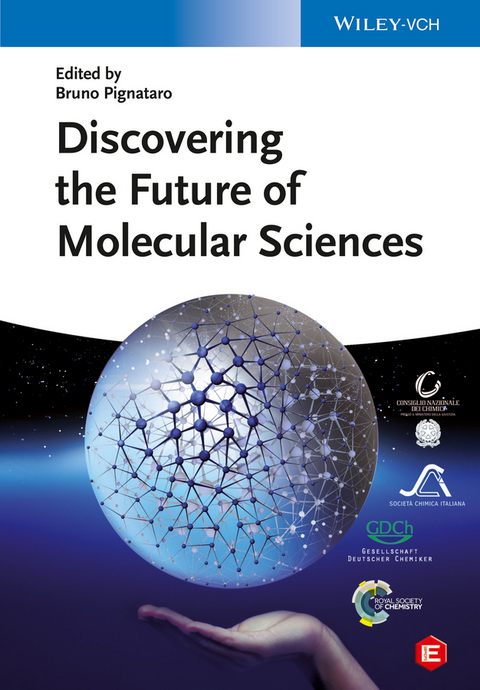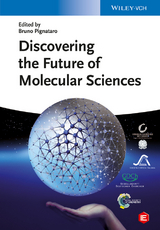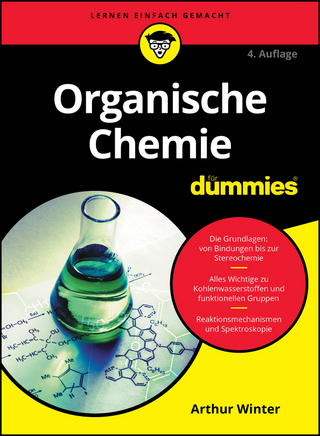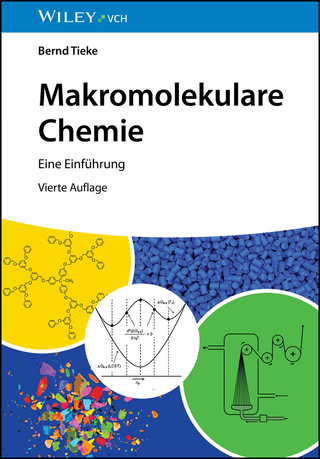Discovering the Future of Molecular Sciences
Wiley-VCH (Verlag)
978-3-527-33544-2 (ISBN)
- Titel ist leider vergriffen;
keine Neuauflage - Artikel merken
Bruno Pignataro is Professor of Physical Chemistry at the University of Palermo. He received his degree in chemistry in 1995 from the University of Catania and his PhD in materials science five years later. He has chaired the European Young Chemist Award in 2006, 2008, 2010 and 2012. He has authored more than 100 scientific publications and leads a group working in the fields of nanoscience, nanotechnology, electronics and biotechnology .
Preface
PART I: Advanced Methodologies
SUPRAMOLECULAR RECEPTORS FOR THE RECOGNITION OF BIOANALYTES
Introduction
Bioanalytes
Metal Complexes as Receptors for Biological Phosphates
Functionalized Vesicles for the Recognition of Bioanalytes
Boronic Acid Receptors for Diol-Containing Bioanalytes
Conclusion and Outlook
METHODS OF DNA RECOGNITION
Introduction
Historical Outline: The Central Dogma
Intermolecular Interaction between the Transcription Factors and the DNA
Miniature Versions of Transcription Factors
Intermolecular Interaction Between Small Molecules and the DNA
Outlook
STRUCTURAL ANALYSIS OF COMPLEX MOLECULAR SYSTEMS BY HIGH-RESOLUTION AND TANDEM MASS SPECTROMETRY
Dissecting Molecular Complexity with Mass Spectrometry
Advances in Fourier Transform Mass Spectrometry
Advances in Mass Analyzers for FT-ICR MS
Advances in Mass Analyzers for Orbitrap FTMS
Applications of High-Resolution Mass Spectrometry
Advances in Tandem Mass Spectrometry
Outlook: Quo vadis FTMS?
Summary and Future Issues
COHERENT ELECTRONIC ENERGY TRANSFER IN BIOLOGICAL AND ARTIFICIAL MULTICHROMOPHORIC SYSTEMS
Introduction to Electronic Energy Transfer in Complex Systems
The Meaning of Electronic Coherence in Energy Transfer
Energy Migration in Terms of Occupation Probability: A Unified Approach
Experimental Detection of Quantum Coherence
Electronic Coherence Measured by Two-Dimensional Photon Echo
Future Perspectives and Conclusive Remarks
ULTRAFAST STUDIES OF CARRIER DYNAMICS IN QUANTUM DOTS FOR NEXT GENERATION PHOTOVOLTAICS
Introduction
Theoretical Limits
Bulk Semiconductors
Semiconductor Quantum Dots
Carrier Dynamics
Ultrafast Techniques
Quantum Efficiency
Ligand Exchange and Film Studies
Conclusions
MICRO FLOW CHEMISTRY: NEW POSSIBILITIES FOR SYNTHETIC CHEMISTS
Introduction
Characteristics of Micro Flow - Basic Engineering Principles
Unusual Reaction Conditions Enabled by Microreactor Technology
The Use of Immobilized Reagents, Scavengers, and Catalysts
Multistep Synthesis in Flow
Avoiding Microreactor Clogging
Reaction Screening and Optimization Protocols in Microreactors
Sale-Up Issues - From Laboratory Scale to Production Scale
Outlook
UNDERSTANDING TRENDS IN REACTION BARRIERS
Introduction
Activation Strain Model and Energy Decomposition Analysis
Pericyclic Reactions
Nucleophilic Substitutions and Additions
Unimolecular Processes
Concluding Remarks
PART II: Materials, Nanoscience, and Nanotechnologies
MOLECULAR METAL OXIDES: TOWARD A DIRECTED AND FUNCTIONAL FUTURE
Introduction
New Technologies and Analytical Techniques
New Synthetic Approaches
Continuous Flow Systems and Networked Reactions
3D Printing Technology
Emergent Properties and Novel Phenomena
Conclusions and Perspectives
MOLECULAR METAL OXIDES FOR ENERGY CONVERSION AND ENERGY STORAGE
Introduction to Molecular Metal Oxide Chemistry
POM Photocatalysis
Energy Conversion
Promising Developments for POMs in Energy Conversion and Storage
Summary
THE NEXT GENERATION OF SILYLENE LIGANDS FOR BETTER CATALYSTS
General Introduction
Synthesis and Catalytic Applications of Silylene Transition Metal Complexes
Conclusion and Outlook
HALIDE EXCHANGE REACTIONS MEDIATED BY TRANSITION METALS
Introduction
Nickel-Based Methodologies for Halide Exchanges
Recent Advances in Palladium-Catalyzed Aryl Halide Exchange Reactions
The Versatility of Copper-Catalyzed Aryl Halide Exchange Reactions
Conclusions and Perspectives
NANOPARTICLE ASSEMBLIES FROM MOLECULAR MEDIATOR
Introduction
Assembly or Self-Assembly
Nanoparticles and their Protection against Aggregation or Agglomeration
Nanoparticle Assemblies Synthesis Methods
Applications of Nanoparticle Assemblies
Conclusion
POROUS MOLECULAR SOLIDS
Introduction
Porous Organic Molecular Crystals
Porous Amorphous Molecular Materials
Summary
ELECTROCHEMICAL MOTORS
Inspiration from Biomotors
Chemical Motors
Externally Powered Motion
Asymmetry for a Controlled Motion
Bipolar Electrochemistry
Asymmetric Motors Synthetized by Bipolar Electrochemistry
Direct Use of Bipolar Electrochemistry for Motion Generation
Conclusion and Perspectives
AZOBENZENE IN MOLECULAR AND SUPRAMOLECULAR DEVICES AND MACHINES
Introduction
Dendrimers
Molecular Devices and Machines
Conclusion
Index
| Erscheint lt. Verlag | 11.6.2014 |
|---|---|
| Verlagsort | Weinheim |
| Sprache | englisch |
| Maße | 170 x 244 mm |
| Gewicht | 1095 g |
| Themenwelt | Naturwissenschaften ► Chemie ► Organische Chemie |
| Technik ► Maschinenbau | |
| Schlagworte | Biochemie u. Chemische Biologie • Biochemistry (Chemical Biology) • Chemie • Chemistry • Molekulare Chemie • Nanomaterialien • nanomaterials • Nanotechnologie • nanotechnology • Organic Chemistry • Organische Chemie • supramolecular chemistry • Supramolekulare Chemie |
| ISBN-10 | 3-527-33544-7 / 3527335447 |
| ISBN-13 | 978-3-527-33544-2 / 9783527335442 |
| Zustand | Neuware |
| Informationen gemäß Produktsicherheitsverordnung (GPSR) | |
| Haben Sie eine Frage zum Produkt? |
aus dem Bereich




